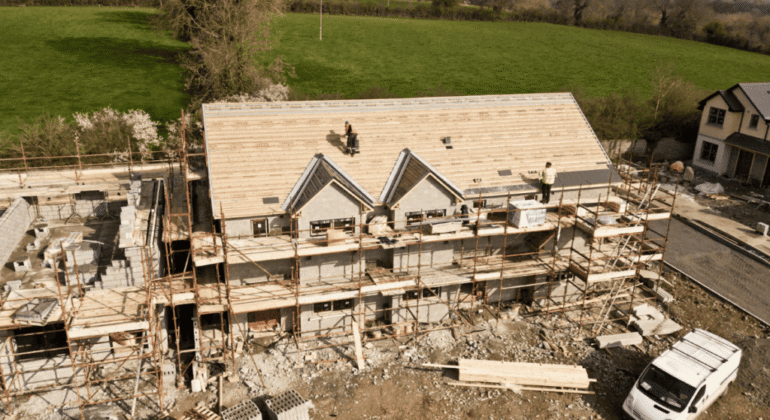How Construction Equipment Impacts Project Timelines And Budgets?
Making effective use of resources is crucial in the high-stakes, fast-paced world of construction if a project is to be finished on schedule and within budget. Among these resources, construction equipment plays a central role. From earthmovers and bulldozers to cranes and concrete mixers, the machinery involved in construction directly influences how quickly and cost-effectively a project progresses. Understanding the impact of construction equipment on timelines and budgets is essential for project managers, contractors, and stakeholders aiming to deliver successful outcomes.
Equipment Efficiency Determines Project Speed
The performance of Torgersons construction equipment has a direct impact on the speed of a project. Modern equipment, when properly selected and operated, can accelerate work by automating or simplifying complex tasks. For example, the use of hydraulic excavators and advanced drilling machines can cut down on manual labor hours and expedite foundational work. Time-consuming activities that once took days can now be accomplished in hours with the right tools.
On the flip side, outdated, poorly maintained, or ill-suited equipment can create bottlenecks. Delays in excavation, transportation of materials, or concrete mixing due to equipment breakdowns or inefficiencies can ripple through a project timeline. A delay in one phase often pushes back subsequent stages, causing significant cumulative delays.
Therefore, project managers who prioritize the right machinery — based on size, capacity, and compatibility with the job — can keep projects on track or even ahead of schedule.
Maintenance And Downtime Affect Budget Control
While acquiring equipment is a major investment, the costs don’t end there. Maintenance is a critical factor that influences both timelines and budgets. Unexpected breakdowns not only halt progress but also incur high repair costs. If backup equipment isn’t readily available, project downtime increases, causing labor and overhead costs to rise unnecessarily.
Preventive maintenance schedules are essential to minimize unexpected failures. The probability of expensive repairs is greatly decreased when equipment is regularly inspected, greased, and maintained. Additionally, properly maintained equipment performs more efficiently, using less fuel and reducing the risk of operator error — both of which contribute to cost control.
In contrast, neglecting maintenance often leads to frequent repairs, which are not only expensive but also unpredictable. This unpredictability makes budgeting more difficult and less reliable, as managers must allocate contingency funds to cover equipment-related risks.
Equipment Selection Influences Labor Costs
The type and quality of construction equipment chosen for a project can dramatically affect labor requirements. Advanced machinery equipped with automation features reduces the need for large labor teams. For instance, GPS-enabled grading equipment can achieve precision that would require several workers using manual tools. In this sense, spending money on advanced construction equipment can result in labor cost reductions over time.
Moreover, well-designed equipment with ergonomic features can also enhance operator performance and reduce fatigue. This results in fewer mistakes and rework — both of which can stretch timelines and increase costs.
However, highly specialized equipment may also require skilled operators, which can increase labor costs in a different way. Training or hiring experienced personnel might be necessary, adding to upfront costs. Still, the long-term efficiency benefits often outweigh these initial expenses.
Rental Vs. Purchase Decisions Affect Budget Flexibility
Deciding whether to rent or purchase construction equipment significantly impacts financial planning. Purchasing heavy equipment is a substantial capital investment, and while it may make sense for long-term, frequent use, it can tie up funds that could otherwise be used for other areas of the project. Moreover, ownership comes with the added responsibilities of maintenance, storage, insurance, and depreciation.
On the other hand, renting equipment provides greater flexibility, especially for short-term or specialized needs. Renting reduces maintenance responsibilities and ensures access to the latest models with advanced features. Additionally, it enables project managers to adjust equipment usage in accordance with project requirements.
However, long-term rentals can become more expensive over time. Therefore, a careful cost-benefit analysis is necessary to determine which approach aligns best with the project’s timeline and budget.
Delays From Equipment Shortages Or Logistics
Equipment availability can also create timeline challenges. Construction sites often rely on coordinated delivery schedules, and any delay in transporting or sourcing necessary equipment can throw off a carefully planned project schedule. These delays may stem from supply chain issues, weather conditions, or logistical mismanagement.
To mitigate this risk, effective planning and communication with suppliers are crucial. Advanced scheduling and inventory tracking systems can help ensure that the right equipment is available when and where it’s needed. Having contingency plans in place — such as rental backups or alternative machinery options — can also prevent these delays from becoming costly setbacks.
Conclusion
Construction equipment is more than just a means to an end — it is a strategic asset that determines how smoothly and cost-effectively a project unfolds. From influencing project speed to impacting labor costs, from shaping budget flexibility to determining overall financial risk, the choice and management of equipment can either streamline operations or derail them. Project managers are better able to make decisions that result in project success when they comprehend the intricate relationship between equipment, schedules, and budgets. By prioritizing equipment efficiency, maintenance, smart selection, and logistics, construction teams can stay on schedule and within budget — two of the most critical benchmarks in the industry.









